
Chinese Wedding Jewlery
Explore the significance, history, and symbolism behind traditional Chinese wedding jewelry, from intricate gold bangles to elaborate headdresses adorned with jade and pearls.

Traditional Chinese Wedding Jewelry
Symbols of Prosperity and Harmony
Traditional Chinese wedding jewelry is not just a display of wealth and beauty; it carries deep cultural significance, symbolizing prosperity, happiness, and the harmonious union of the bride and groom. Passed down through generations, these pieces are rich in symbolism and tradition, making them an integral part of Chinese weddings. This blog delves into the various types of jewelry traditionally worn by Chinese brides, exploring their meanings and the intricate craftsmanship behind each piece.
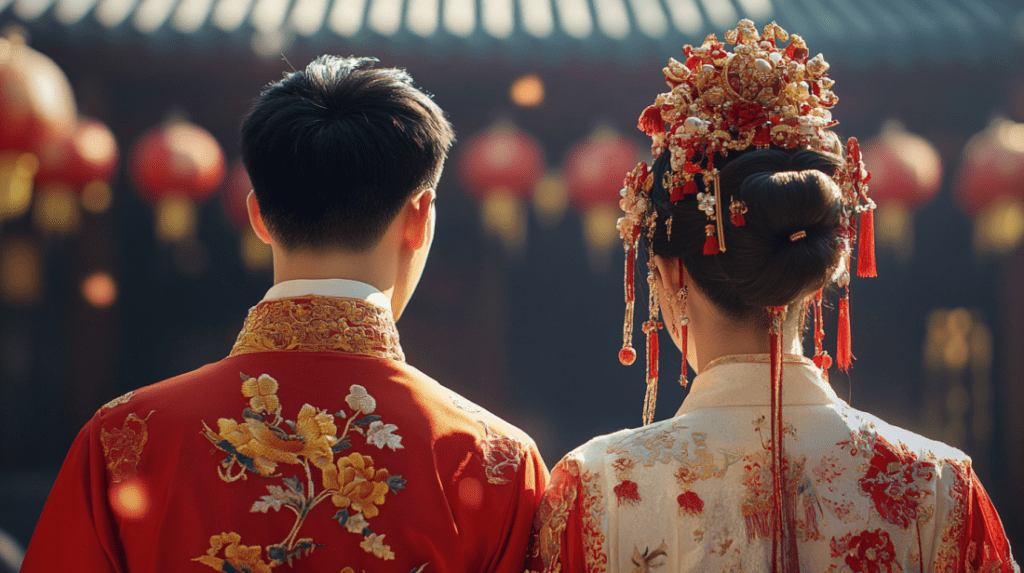
The Significance of Gold Jewelry
Gold has long been revered in Chinese culture for its association with wealth, good fortune, and happiness. It is no surprise that gold jewelry plays a central role in traditional Chinese weddings. Brides are often adorned with gold bracelets, necklaces, earrings, and rings, each carefully selected to reflect the family’s status and to bring luck to the newlyweds. The brilliance of gold also complements the bride’s red wedding attire, symbolizing a bright future and a prosperous marriage.
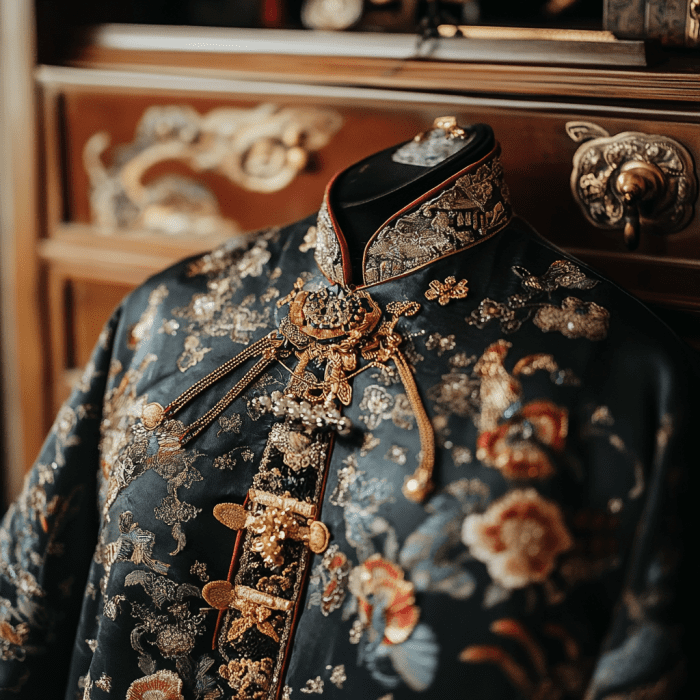
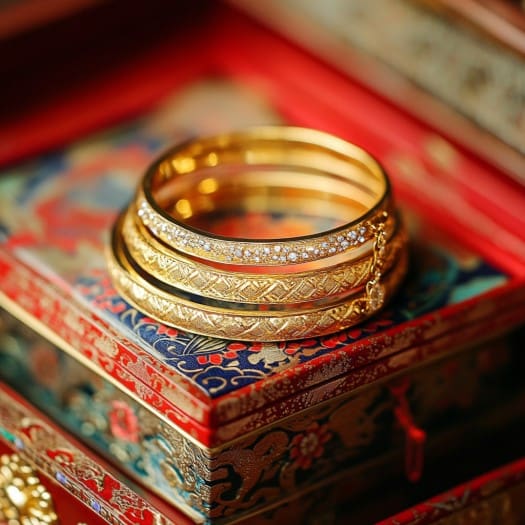
Among the most iconic pieces are the gold bangles engraved with the “囍” symbol, which means “double happiness.” This symbol is a common motif in Chinese weddings, representing the joy and harmony of marriage. The bangles are often given to the bride as a gift from her parents or in-laws, serving as a blessing for a long and happy marriage. The circular shape of the bangles, with no beginning or end, also symbolizes eternity and the everlasting bond between the couple.
The Tradition of the “Four Pieces of Gold”
In Southern China, a time-honored wedding tradition involves the gifting of the “Four Pieces of Gold” (四点金), which typically includes a gold necklace, bracelet, ring, and earrings. These pieces are often given to the bride by her parents or in-laws as a symbol of wealth and a wish for a prosperous future. The tradition of the “Four Pieces of Gold” is particularly prevalent among Cantonese families and is seen as an essential part of the wedding festivities.
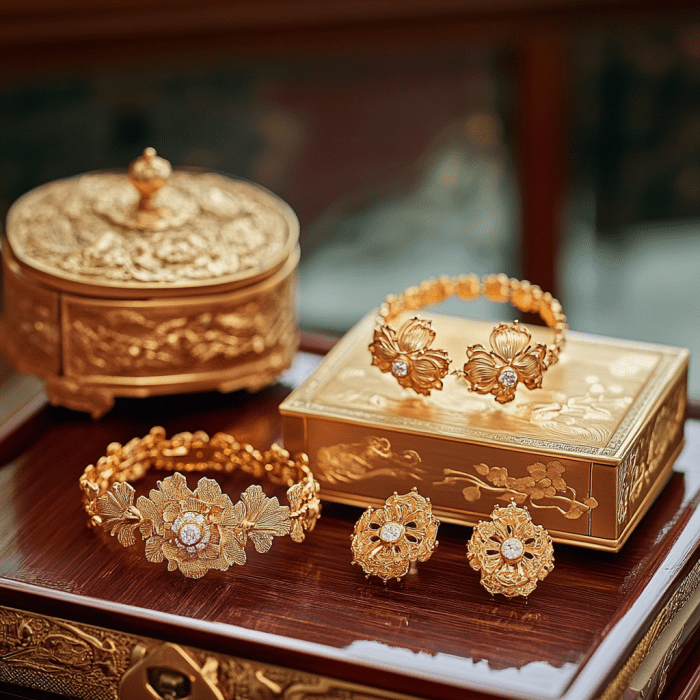
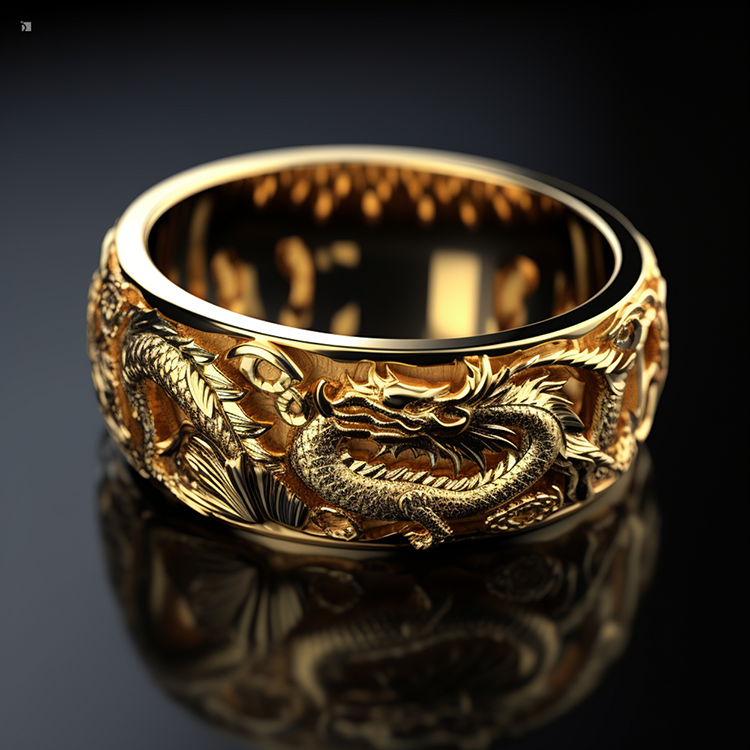
The design of these pieces often features intricate motifs such as dragons and phoenixes, which are powerful symbols in Chinese culture. The dragon represents the groom, embodying strength and protection, while the phoenix symbolizes the bride, representing grace, beauty, and renewal. When combined, these motifs convey a harmonious and balanced relationship, making them a popular choice for wedding jewelry.
Jade: The Stone of Purity and Harmony
Jade holds a special place in Chinese culture, symbolizing purity, protection, and harmony. It is often incorporated into wedding jewelry to bless the bride with these virtues. Jade gemstone pieces can range from simple pendants to elaborately carved bracelets and earrings, often set in gold or silver to enhance their beauty. The green hue of jade is believed to bring peace and tranquility to the wearer, making it a favored choice for brides seeking a harmonious marriage.
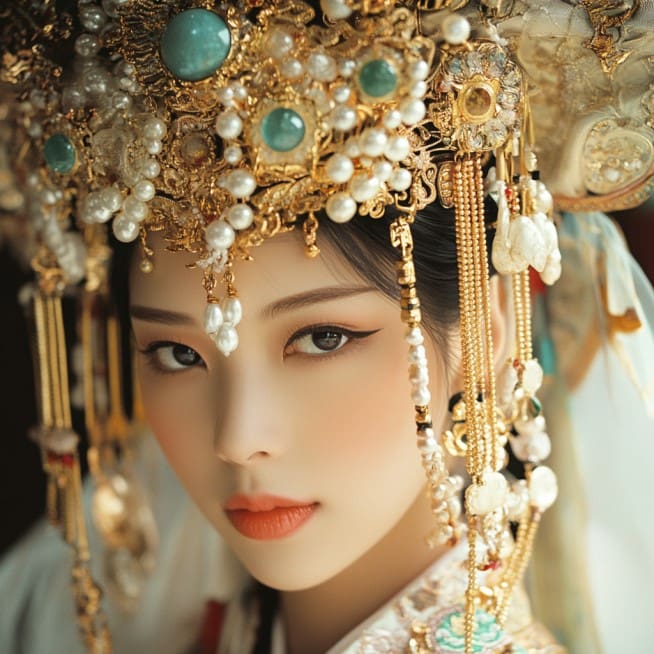
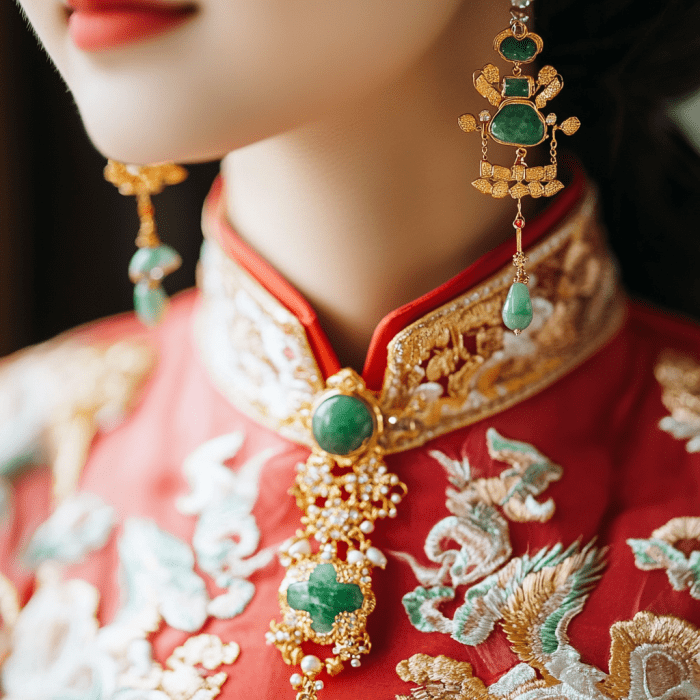
In addition to its symbolic meanings, jade is also prized for its aesthetic appeal. Its smooth texture and lustrous shine make it a stunning addition to any bridal ensemble. Brides often wear jade bangles or pendants as a part of their wedding attire, sometimes combined with other precious materials like pearls to create a more elaborate look. The combination of jade with these materials not only enhances the overall beauty of the jewelry but also adds layers of meaning, symbolizing a marriage blessed with purity, prosperity, and happiness.
The Grandeur of Headdresses and Traditional Attire
Elaborate headdresses are another key element of traditional Chinese wedding jewelry, particularly in regions where customs are deeply rooted in history. These headdresses are often embellished with gold, jade, pearls, and sometimes even coral, creating a stunning crown-like piece that adds to the bride’s regal appearance. The headdress is not merely a decorative item; it is steeped in cultural significance, representing the bride’s status and the blessings she brings into the marriage.
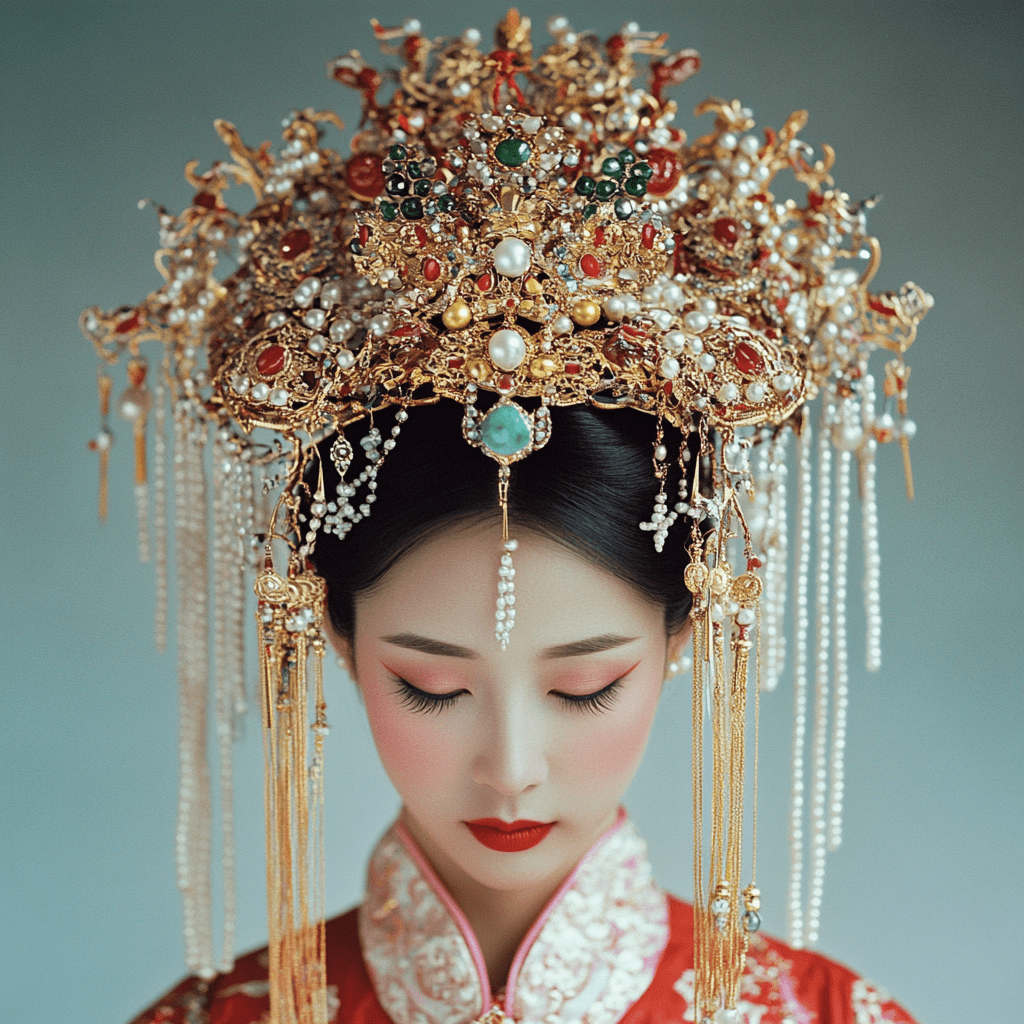
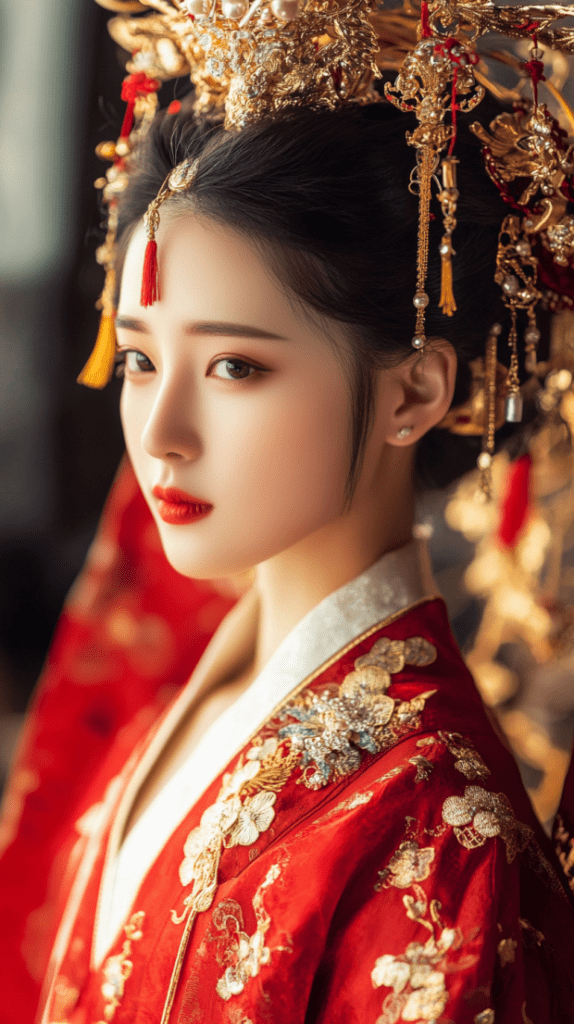
Accompanying these ornate headdresses is the traditional red wedding attire, often embroidered with gold thread. Red, in Chinese culture, symbolizes happiness, prosperity, and good luck, making it the ideal color for a wedding. The gold embroidery, often depicting dragons, phoenixes, or floral patterns, adds a layer of opulence and further symbolizes wealth and a prosperous union. Together, the headdress and attire create a look that is both majestic and meaningful, encapsulating the essence of a traditional Chinese wedding.
Celebrating Chinese Bridal Jewelry
Traditional Chinese wedding jewelry is more than just a display of beauty; it is a reflection of centuries-old customs, rich symbolism, and cultural heritage. These timeless traditions continue to be cherished by modern brides, preserving the cultural significance of these exquisite pieces for generations to come. While you’re still here, if you have a jewelry piece that needs a repair, you can be sure to trust it to the hands of our Master Craftsmen right here at My Jewelry Repair

Check Out the Magic of Our Jewelry Services!
Resources:
- Red & Gold: What You Need To Know About Chinese Wedding Jewellery: https://www.tatlerasia.com/
- Chinese Wedding Traditions: The Meanings of Chinese Wedding Jewellery: https://brideandbreakfast.hk/a>
- Blog outline and revising assisted by AI resources such as Google Gemini.
